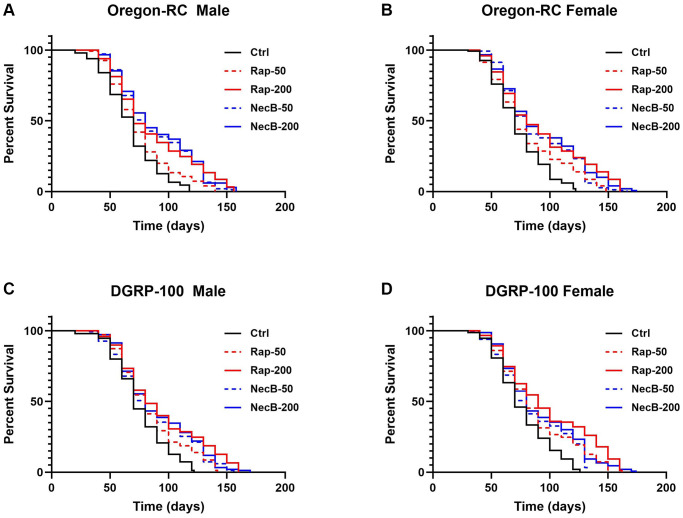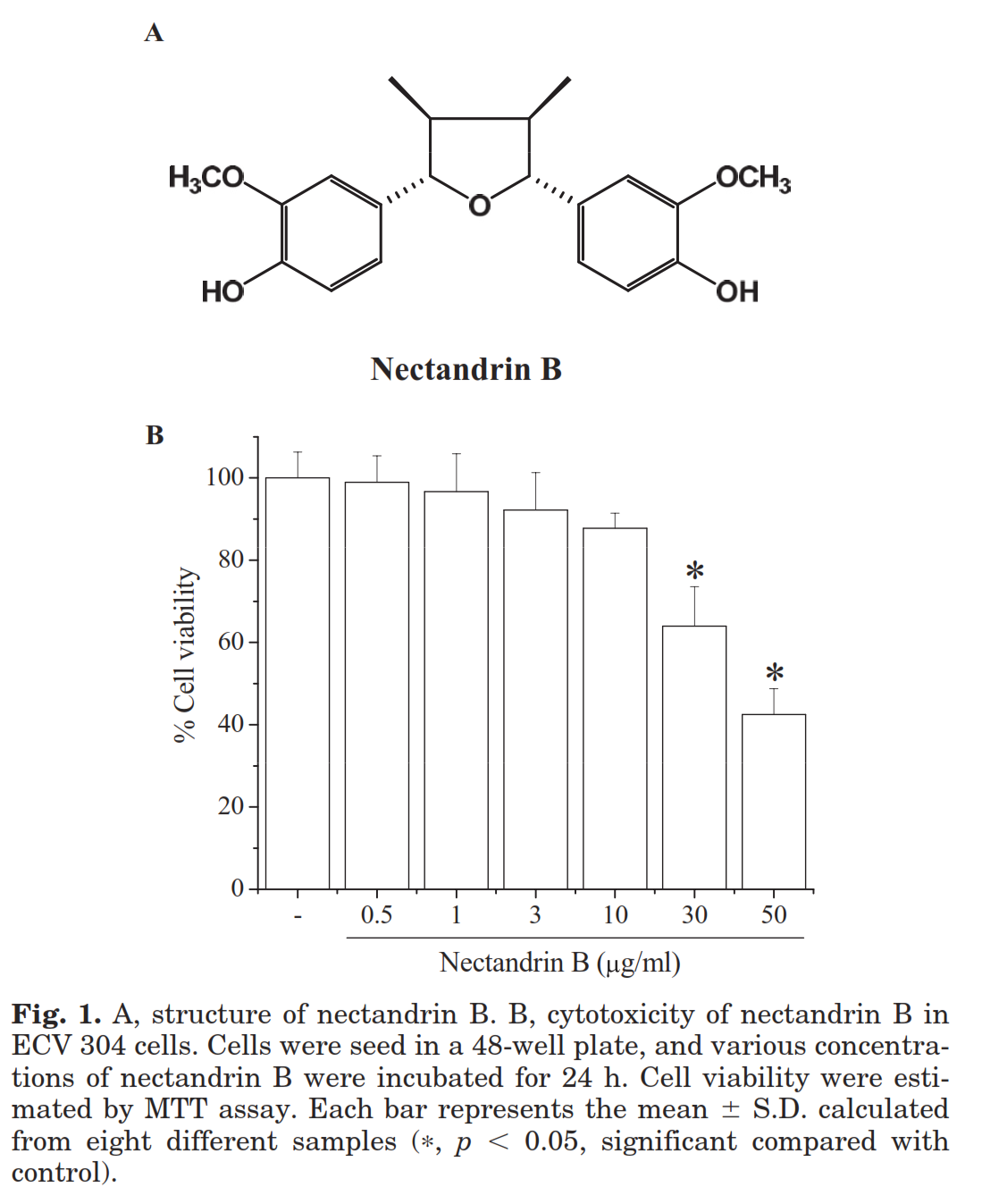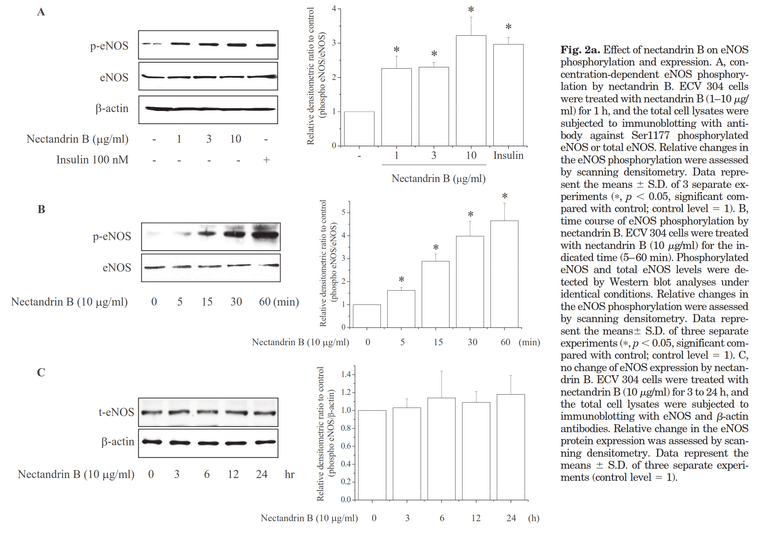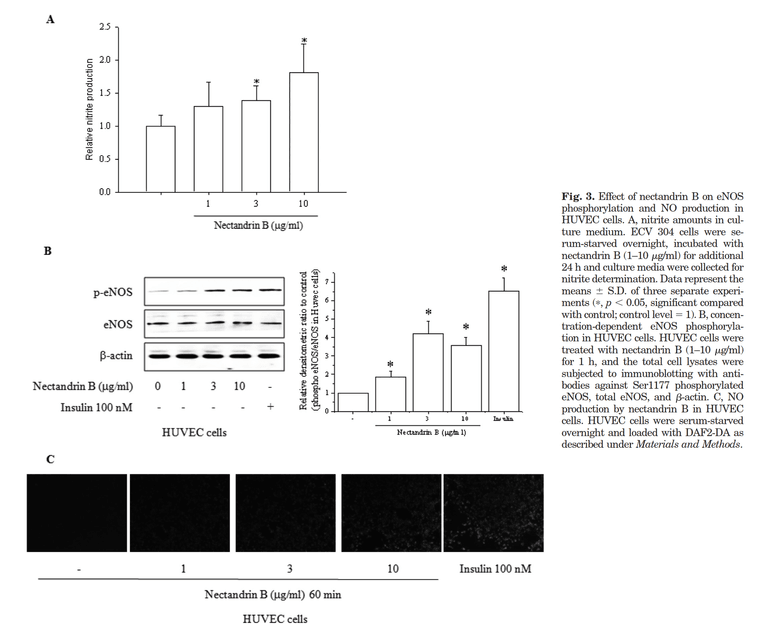Netmeg for longevity?
-
Nectandrin B from nutmeg worked as well as rapamycin in extending livesspan of Drosophila.

Nectandrin B significantly increases the lifespan of Drosophila - Nectandrin B for longevity (2023)Abstract
Phytochemicals are increasingly recognized in the field of healthy aging as potential therapeutics against various aging-related diseases. Nutmeg, derived from the Myristica fragrans tree, is an example. Nutmeg has been extensively studied and proven to possess antioxidant properties that protect against aging and alleviate serious diseases such as cancer, heart disease, and liver disease. However, the specific active ingredient in nutmeg responsible for these health benefits has not been identified thus far. In this study, we present evidence that Nectandrin B (NecB), a bioactive lignan compound isolated from nutmeg, significantly extended the lifespan of the fruit fly Drosophila melanogaster by as much as 42.6% compared to the control group. NecB also improved age-related symptoms including locomotive deterioration, body weight gain, eye degeneration, and neurodegeneration in aging D. melanogaster. This result represents the most substantial improvement in lifespan observed in animal experiments to date, suggesting that NecB may hold promise as a potential therapeutic agent for promoting longevity and addressing age-related degeneration.
Keywords: Myristica fr
-
Only the abstract is available. The rest is behind a paywall.. Sci-Hub has the full text here. If you can access the full text, here are some graphs.



-
Since the theme is nutmeg...this page covers the psychoactive aspects of nutmegs 3 main oil-soluble allylbenzenes. Nutmeg also contains fairly potent (water-soluble?) FAAH inhibitors which increase endocannabinoid levels. Some psychoactive terpene oils also, and a toxic fat called trymistrin, ironically it's a saturated fat.
Nutmegs allylbenzenes are metabolised into active molecules via a series of enzymes and possibly regular "condensation" type reactions (a + b = c).
Most nutmeg experiences using whole/powdered nutmeg are a combination of cannabinoid + psychedelic effects. The psychoactive precursors allylbenzenes are present in many other herbs and spices. Basil (methyl chavicol) has a fascinating psychedelic character when properly "bio-activated". Mace contains the same allylbenzenes as nutmeg (mace is the outer covering of the actual nutmeg).
-
@wrl - thank you for the link and cautionary words. The netmeg is information is very preliminary and it good to know about the downside of including too much in my recipes.
-
@DavidPS
A good strategy when investigating foods is to explore their profile from a traditional medicine perspective. This gives an insight into the items more subtle properties which are equally as important as it's physical properties. Often it tells you things which a "conventional" analysis (eg a scientific study on Nutmeg's influence on digestive transit time) wouldn't, or which a "conventional" way of thinking would overlook.Personally I find the traditional Chinese medicine (TCM) take on foods easy to understand, more so than the Indian Ayurvedic one. TCM is orientated for medicinal intentions but the info is applicable for general day-to-day use.
Here's the TCM profile for Nutmeg:
TCM category: Herbs that stabilize and bind
TCM nature: Warm
TCM taste: Pungent
Meridian affinity: Large intestine, Spleen, Stomach
Dosage: 3 - 9 grams [for medicinal purposes]
Key Actions: Warms the Spleen and Stomach, circulates Qi. Protects the Intestines and stops diarrhea.
Medicinal Uses: Diarrhea / Abdominal pain / Vomiting / Loss of appetite / Abdominal bloatingHere's the TCM profile for coffee:
TCM nature: Warm
TCM taste: Bitter, Pungent/Acrid
Meridian affinity: Liver, Spleen, Heart
Key Actions: Regulates the flow of Qi, Opens the Heart, Clears toxins, Cleanses the Gallbladder, Warms and Moves Blood
Medicinal Uses: Regulates menses, relieves headaches, lifts the spirit, energizes, promotes mental clarity, improves circulation, prevents gallstones, regulates constipation, boosts metabolism, promotes urination, eliminates toxinsFor some contrast, here's the TCM profile for milk:
TCM nature: Slightly cold
TCM taste: Sweet
Meridian affinity: Heart, Lung, Stomach
Key Actions: Tonify deficiency, Tonify the Lung and Stomach, Promote the secretion of body fluid, Moisten the Intestines, Tonify Blood and remove Toxicity.
Medicinal Uses: Weakness, physical strain, constipation, diabetes, regurgitation, dysphagia.
Dosage and Administrations: Boil it beforehand
Cautions: It is contraindicated in case of deficiency cold in Spleen and Stomach.As you can see, TCM offers a rich context for interpreting herbs/spices/foods. The point of TCM is restoring and maintaining balance. In this context, nutmeg's warming nature would be balanced by mixing with something cooling like milk or cheese. This also applies to the body condition, if the body is in a cold condition then adding nutmeg will warm things up. This isn't referring to temperature!
There are some subtleties which might cause someone accustomed to the typical Western modality to do a "double take". Eg on a super hot day drinking warm peppermint tea is more effective than ice cold water.
IMHO the Ray Peat approach would greatly benefit from incorporating TCM principles. TCM would be the icing on the cake so to speak. I wonder if Ray ever peeked into the world of TCM, no doubt he would have found it fascinating and worthwhile. I bet you it would have influenced his recommendations, for example...
- only drink warm liquids (especially milk)...explains why OG Chinese prefer warm OJ/water
- add warming spices to dairy (milk/cheese)
- combine sugar/honey/maple syrup with things to mitigate "dampness" (dampness not good)
- combine heavy meals with warming spices/herbs which aid digestion
- combine coffee with an item that mitigates dryness, eg dairy adds moisture (in excess = damp)
- and notably...avoid cold ice cream (!). The issue there is that ice cream is composed of cooling/cold/damp ingredients, and the item itself is frozen - double whammy. At the very least, Ray would have said to add warming/hot spices like ginger which seems most suitable. Powdered ginger, candied ginger etc.
In a tropical sunny environment, items with a cooling/cold nature can be better tolerated, whilst in a cold environment items with a hot/warming nature are preferable. Again, this isn't referring to temperature.